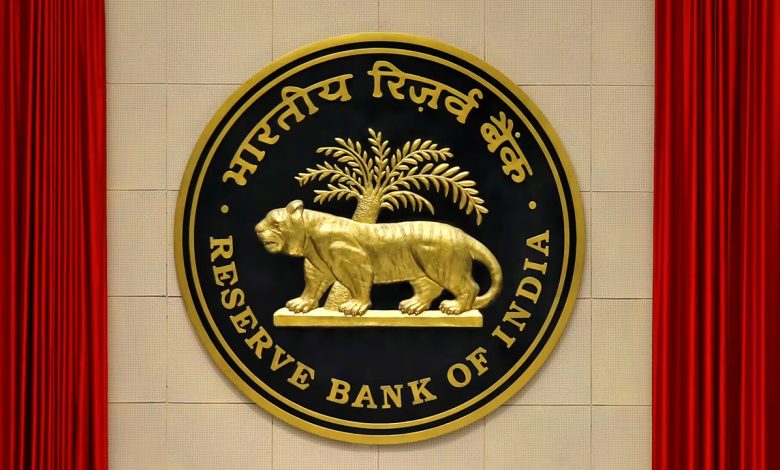
Context- In order to deal with the dangers posed by internationalization, RBI Deputy Governor emphasizes the need for improved volatility management.
Key Highlights
- To stabilize the Indian rupee, the Reserve Bank of India is working to reduce the use of the US dollar.
- Allowing international trade to be invoiced in Indian rupees rather than dollars and other major currencies is one of the initiatives.
- In addition to allowing Indian traders to use specialized Vostro accounts to settle their rupee-denominated trade invoices, the RBI has established India’s rupee trade settlement mechanism to attract interest from additional nations.
- Sri Lanka and Mauritius are expected to use the Indian rupee trade settlement mechanism after Russia opened the first Rupee Vostro account.
- The scope of participation in foreign exchange markets would change as the economy develops and grows.
- With increasing integration with the rest of the world, it is likely that more entities will be exposed to risks associated with foreign exchange.
What is Internationalization of Indian Rupee?
- It alludes to the method involved with making the Indian rupee a universally acknowledged cash, like other significant monetary forms like the US dollar, Euro, and Japanese yen and so on.,
- By increasing the rupee’s use in cross-border transactions, foreign investment, and international trade, this procedure aims to support India’s economic development and growth.
- It calls for the liberalization of India’s capital account, which means allowing capital to flow freely into and out of the country.
Advantages of internationalization of Rupees
- Increased global acceptance: The rupee’s internationalization has the potential to increase its global acceptance, resulting in a rise in rupee-based international transactions and a decrease in demand for foreign currencies and exchange rate risks.
- Decreased exchange costs: Indian businesses will not have to pay exchange rate fees to convert rupees into foreign currencies for international transactions as a result of the rupee’s internationalization.
- Lift to exchange and venture: By making it easier for Indian businesses to invest abroad and for foreign businesses to invest in India, internationalization of the rupee can encourage trade and investment.
- A rise in competition: By allowing the rupee to reflect India’s economic fundamentals and reducing the need for the Reserve Bank of India to intervene in currency markets, a rupee that is more freely traded can improve India’s competitiveness in global markets.
- Reserve diversification: Internationalization of the rupee can expand India’s unfamiliar trade saves from a fixation in US dollars, lessening the dangers related with holding a solitary money.
Issues with the internationalization of Rupee
- Variability in exchange rates: The primary obstacle to internationalizing the rupee is that it can bring about risks for investors and businesses that deal in more than one currency, causing uncertainty and higher transaction costs.
- Incorporation into international financial markets: Integration with global financial markets necessitates it, which can present difficulties in terms of investor protection, market infrastructure, and regulatory compliance.
- Restricted liquidity: Because the rupee is not yet widely traded, there is limited liquidity on global markets. This makes it difficult for investors to buy and sell assets that are denominated in rupees, which can reduce the currency’s attractiveness.
- Financial markets that aren’t as developed: When compared to other major economies, India’s financial markets are still relatively underdeveloped, limiting the variety of products and services available to international investors.
- Administrative difficulties: Given the complexities of global financial markets, it requires a supportive regulatory environment that strikes a balance between the need for financial stability and openness. This is difficult to achieve.
Actions taken to encourage the internationalization of the Indian rupee
- Liberalization of the capital account: The RBI has gradually eased restrictions on capital flows to and from India, making it easier for more trade and investment to take place across borders.
- Promotion of rupee markets outside of India: Indian banks have been able to participate in the offshore non-deliverable market for rupee derivatives thanks to the RBI, which has made it easier for offshore rupee markets to grow.
- Swap agreements for currencies: The RBI has entered into currency swap agreements with a number of nations that enable the exchange of rupees and other currencies between the central banks of those nations.
- Bonds in rupees are being promoted: The fact that the government of India has permitted Indian businesses to issue bonds in rupees on international markets has contributed to an increase in demand for the rupee.
- Agreements on bilateral trade: The government has signed a number of bilateral trade agreements with other nations, which has increased the rupee’s use in international transactions and increased cross-border trade and investment.
Way Ahead
- To ensure a smooth and successful transition toward the internationalization of the Indian rupee, policymakers, market participants, and regulators must carefully plan and work together.
- Overall, a rise in the global use of the Indian rupee will help position India as a more appealing location for trade and investment from abroad.





.png)



